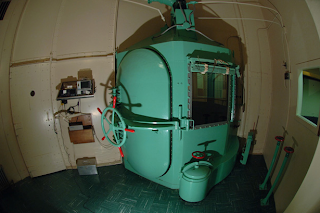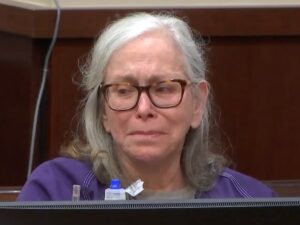 |
| Image courtesy KALW News. |
One of the main features of the Prop 34 campaign was an increase in support for abolition by people who are not necessarily ideologically opposed to the death penalty, but resent the wastefulness of essentially holding people in life imprisonment conditions in a costly and dilapidated facility while allowing them free representation and litigation space. The campaign emphasized that, since resuming the death penalty, only 13 people have been executed in California, while 84 died of natural causes. And several conservative editorials in support of Prop 34 explicitly said that they fully support the death penalty, but not as administered by the state. This trend is pretty pronounced not only in CA policymaking, but also in states that recently abolished the death penalty. The recent issue of the ABA Criminal Justice section journal features an article by yours truly and Ryan Newby in which we analyze the way in which savings have impacted the anti-death-penalty activism realm (I’ve said similar things here.)
But, Houston, there’s a problem. One of the negative consequences of eliminating all activist arguments against punitivism save for the cost argument is that one can conceive of rather horrific criminal justice policies that are also cheap. You don’t have to go as far as Texas to see the ill effects of tough-‘n’-cheap mentality. If the death penalty is broken, a potential conservative argument goes, just fix it by making sure that these people DO get executed, and save money that way!
Which is why I found Bob Egelko’s story on today’s Chron fascinating. Apparently, the California District Attorneys Association proposed to amend the death penalty law in CA, proposing SB779, which would shorten death penalty appeals and habeas proceedings and resuscitate the gas chamber as an execution method (in response to the chemical shortage that postponed an execution a while ago.) The proposal died in the Public Safety Committee, 5-2. The Chron reports:
The bill would have limited most condemned prisoners to one round of appeals in the state court system and another in federal court. Other provisions would have eliminated public review of regulations on execution procedures, barred disclosure of the suppliers of drugs used in executions and authorized a new method of gas chamber executions.
California’s last execution by cyanide gas was in 1993. A federal judge ruled a year later that the gas chamber at San Quentin caused excruciating pain and violated the constitutional ban on cruel and unusual punishment.
Lethal injections at the prison were halted in 2006 when another federal judge ruled that the executions, carried out by poorly trained staff in a dimly lit chamber, posed an undue risk of a prolonged and agonizing death. The court-imposed moratorium is likely to remain in place at least through 2013 as the state tries to validate new regulations and cope with a shortage of execution drugs.
Under SB779, a gas execution would have been carried out by filling the chamber with a nontoxic gas, such as nitrogen or helium, displacing the oxygen and suffocating the prisoner. The condemned inmate could choose between gas and lethal injection, but the bill specified that the execution would be conducted by gas if injections were not legally available.
To readers who are death penalty supporters, this is an interesting turn of events. It seems like, even in principle we endorse the death penalty, it is hard to live with the consequences of thinning out due process. There is no way back, folks. The only direction to go is forward, and any fantasy of saving money by hanging people in the town square cannot override the reality of many decades of death penalty litigation. Abolition is the only way to go now.




1 Comment
I agree about abolition. Even ignoring the huge financial burden of putting someone to death, what is the most disconcerting to me it the large number of people who have been found innocent while on death row, or even after they were executed.